Strawberries or Fragaria Are among the most favored and tasty fruits in Australia. As strawberry season approaches, this is an ideal moment to sow strawberry seeds or plant young saplings and attempt growing your own!
Filled with nutrients and an incredible supplier of antioxidants Strawberries are a common favorite in numerous Australian homes during the warmer seasons. Let's explore together the top choices for cultivating strawberries at home.
How to grow strawberries
It might astonish you to know that cultivating your own strawberries is surprisingly simpler than you imagine. The primary fact about the strawberry plant is that it belongs to the rose family. This indicates that strawberries are not truly berries or fruits at all. Rather, they are The extended Stamens, along with the black seeds inside strawberries, actually constitute what we refer to as the 'fruit'.
Below is all the information required for cultivating your very own strawberry plants.
Strawberry varieties
Several kinds of strawberries grow in Australia. Among them, some of the most favored types include:
- Millewa
- Lowanna
- Kiewa
- Kalinda
- Bunyarra
- Adina
- Tallara
- Festival
- Rubygem
Ways to Look After Strawberries
Climate
Although strawberries can be cultivated across all regions of Australia, the majority of large-scale strawberry farms are located in areas with milder climates such as Toolangi, Stanthorpe, and Tasmania. The ideal season for planting strawberries is during autumn and early spring.
Aspect
To ensure your strawberries thrive, grow them in a location where they receive ample sunlight and have access to damp yet well-aerated soil. It’s suggested by some specialists to utilize straw mulch or manure as this can aid in retaining moisture and keeping insects at bay!
Soil
Well-draineSoild and slightly acidic.
Water
Maintain dampness of soil. Ensure watering is directed at the soil rather than the foliage.
Food
Applied weekly using liquid fertilizer to encourage foliage expansion, robust root formation, and an abundance of tasty fruits.
Mulch
Use an organic mulch like sugarcane or lucerne to cover the soil or growing medium.
Disease
It's crucial to ensure the fruit isn't touching the ground since exposure to moisture can be detrimental. And keeping the soil consistently damp for an extended period can lead to fungal issues like grey mold. or fruit rot.
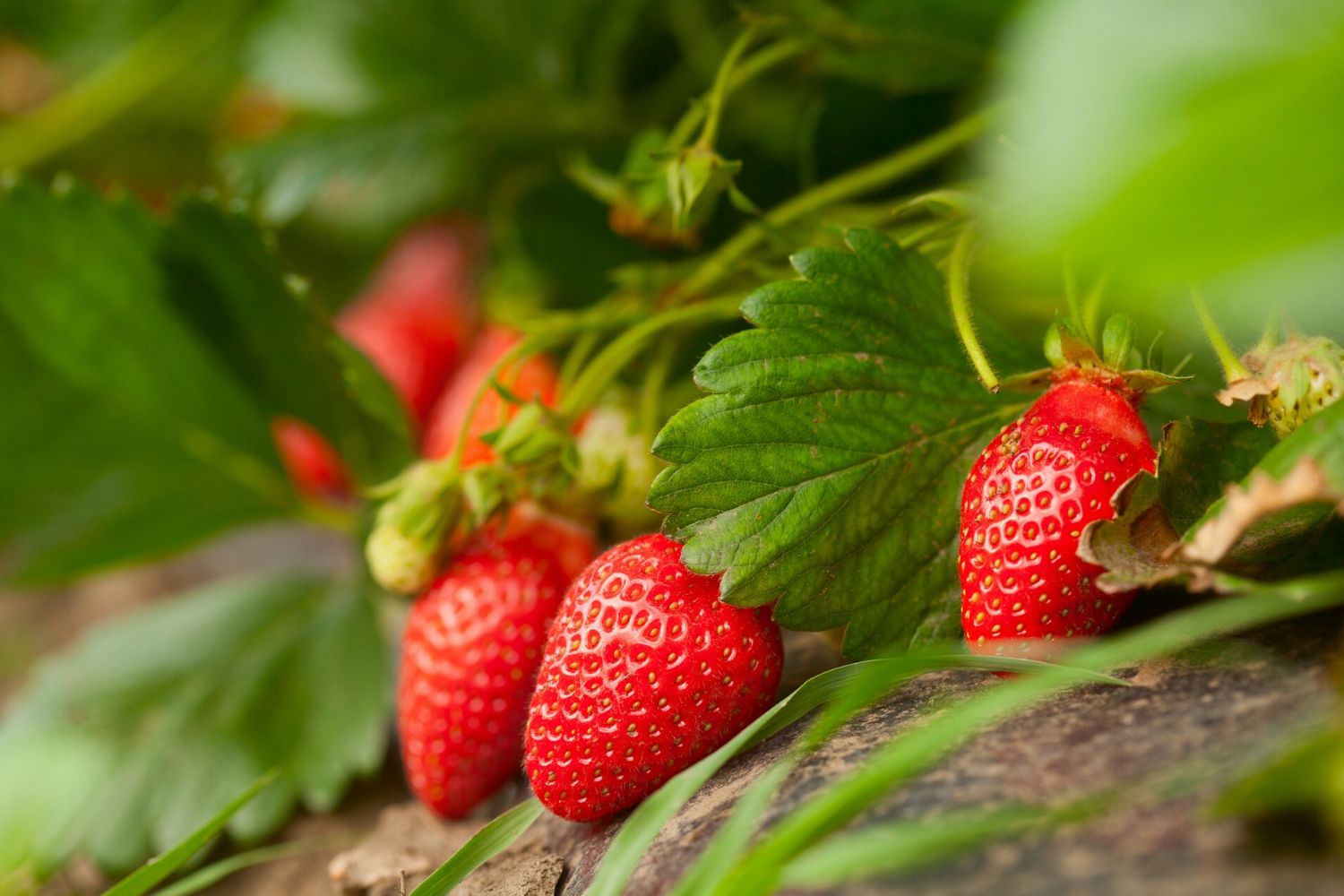
How to plant strawberries
Strawberries are adaptable and can be cultivated using various methods.
Strawberries produce high-quality fruit during the initial 1-2 years. After this period, they yield considerably fewer berries over the next 5-6 years until eventually ceasing production altogether. Due to this cycle, numerous commercial farmers opt to replant strawberries biannually. An established and healthy strawberry plant generates runners that establish roots and develop into new plants independently.
How to propagate strawberries
Absolutely! You can propagate your strawberry plants at no cost. These plants produce runners—side shoots—that develop their own root systems to create new specimens. However, these runners require substantial energy, which could detract from fruit yield during the initial two years. Thus, it's best to remove them until the third year when you can utilize the small rooted nodes along the runners as starter plants. Anchor these nascent roots using a hairpin or wire. About six weeks later, detach this offspring plant from its mother; then either let it continue growing in place or transplant it elsewhere.
The most effective method for cultivating strawberries
Although you have the option of buying strawberry seeds, the simplest method to cultivate strawberries is to begin with young plants, known as seedlings, available for sale at your nearby nursery.
There are six methods for cultivating strawberries.
1. In the ground
Historically, cultivating strawberries directly in soil has been the preferred method. Just buy one or two young plants and space them about 30 centimeters apart when planting them in your garden bed.
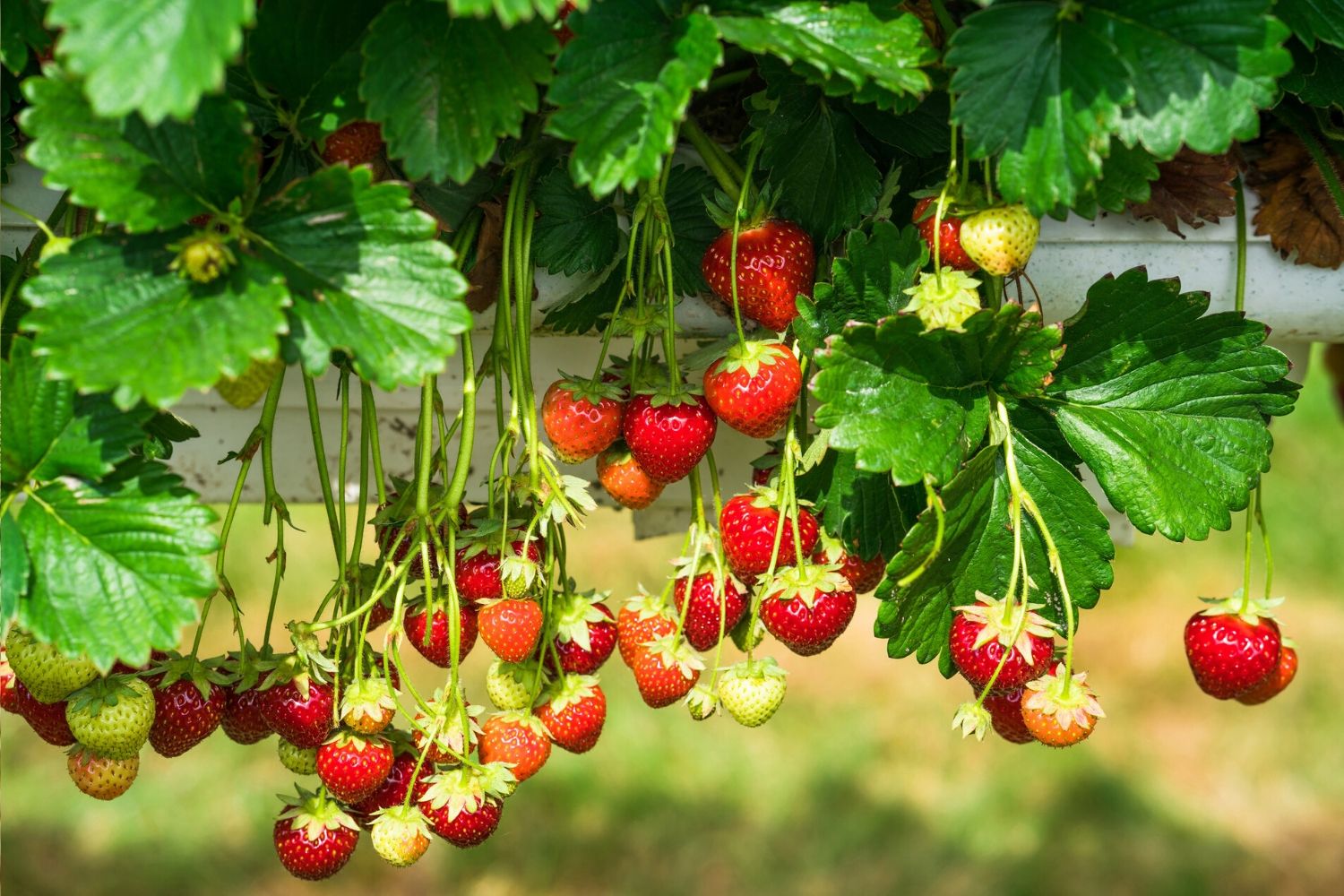
2. Raised garden beds
The strategy mentioned previously also applies here. raised garden beds .
3. Hanging pots
Hanging strawberry planters offer an entertaining and inventive solution for those with limited space to relish fresh strawberries right at home. These hanging containers typically boast excellent drainage, much to the delight of your strawberry plants.
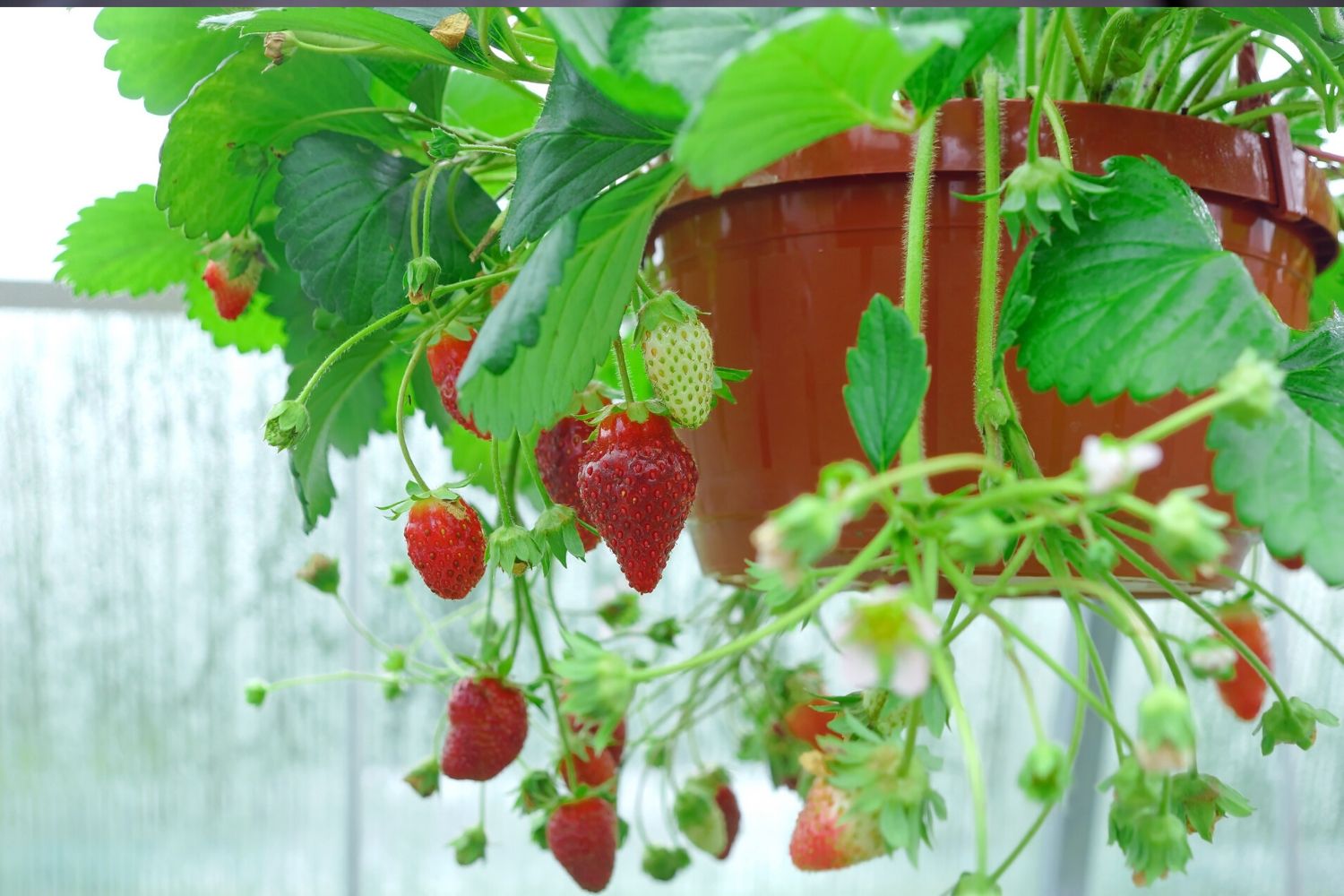
4. Terracotta pots
Certainly, you can cultivate strawberries in containers. The sight of vibrant green strawberry leaves against terra-cotta pots is quite appealing. However, do keep certain precautions in mind. terracotta strawberry pots In the scorching Australian weather, terracotta surfaces can become extremely hot and may singe both the fruits and foliage.

5. Vertical garden
Another excellent choice for urban dwelling is a vertical garden Similar to tomatoes, strawberries possess robust stems, making them a perfect choice for your vertical garden.
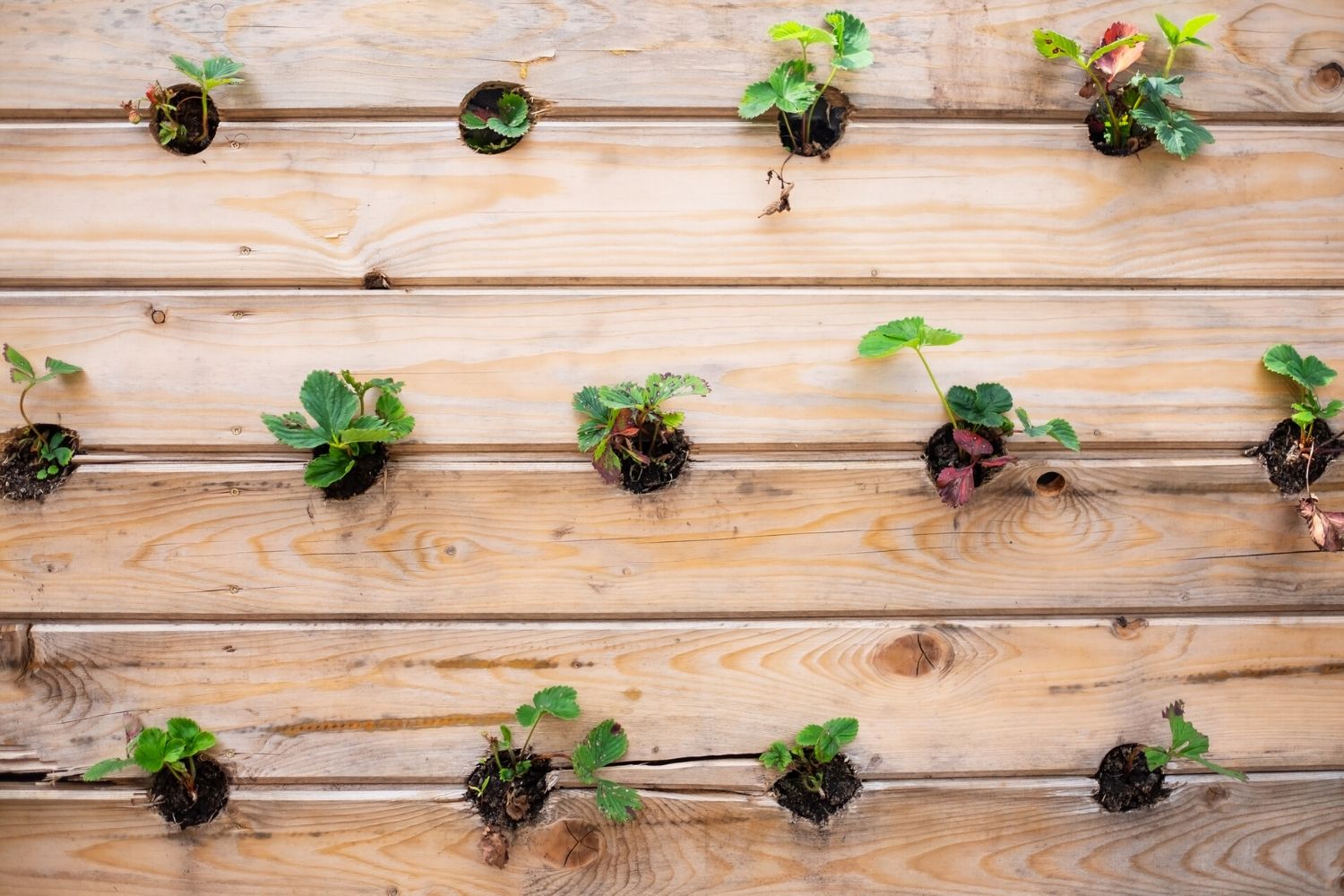
6. Pipe
Cultivating strawberries inside a PVC pipe is both feasible and visually appealing when executed correctly. The primary methods for growing strawberries in these tubes include cutting several circular openings in the pipe or slicing the tube longitudinally so they can extend fully along its length.
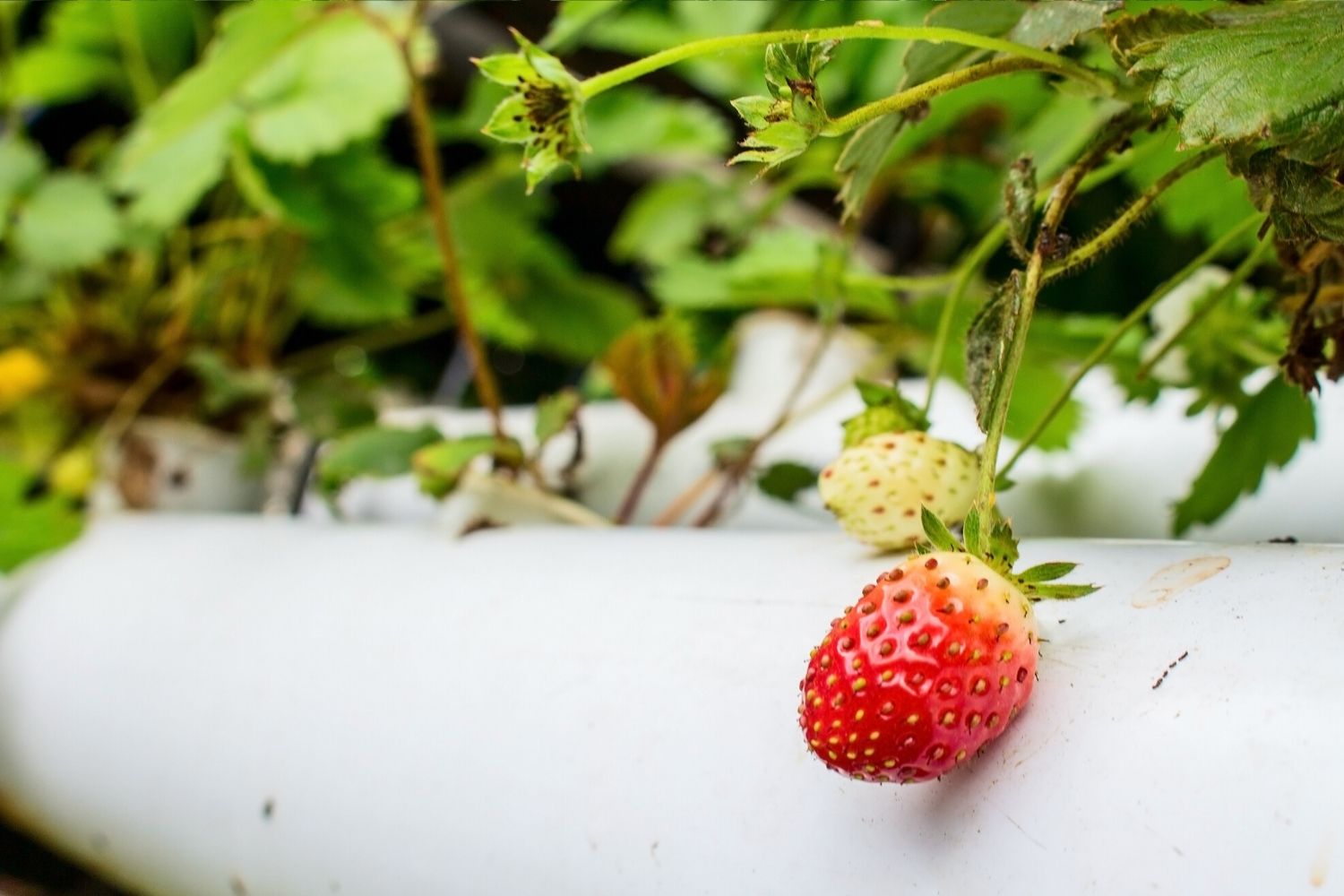
How to harvest strawberries
Now that you've put in the effort, you might be curious about how long it takes for strawberries to mature. Here are some indicators to watch for: Initially, your strawberry plants will begin blooming between 8 to 16 weeks post-planting, followed by ripe berries appearing approximately 4 to 6 weeks later when blossoms emerge. Distinct from numerous other fruits, harvested strawberries cannot enhance their ripeness; hence ensure they're vividly red and succulent before picking them.
Pests that love strawberries
Strawberries aren't just a favorite for us; tiny creatures like them as well! From two-spotted mites to worms, slugs, and even possums, these organisms enjoy them too! garden pests Love strawberries for their fruity goodness, yet they also relish eating the plant's vibrant green foliage.
Ways to deter birds from your strawberries
It's likely that you won't be the only one eyeing those luscious berries. Cover your strawberry patch with bird netting to protect them from avian visitors and boost your harvest. Another approach is as follows: prevent birds from feasting on your fruit without causing harm to them .
Top plant partners for strawberries
Onion and garlic serve as excellent companion plants for strawberries because their potent aromas help deter pests.
Thyme: works well as an edge for strawberries since it keeps the worms away.
Leafy greens: numerous specialists think that planting lettuce , combining spinach and strawberries boosts the efficiency of all three!
After cultivating your strawberries, the subsequent step is to figure out how to utilize them! Will you consume them directly from the plants, or incorporate them into delectable treats? Take a look at 19 of our top picks for delicious strawberry recipes ideal for the spring weather.
The post Ways to cultivate strawberries at your residence appeared first on Better Homes and Gardens .